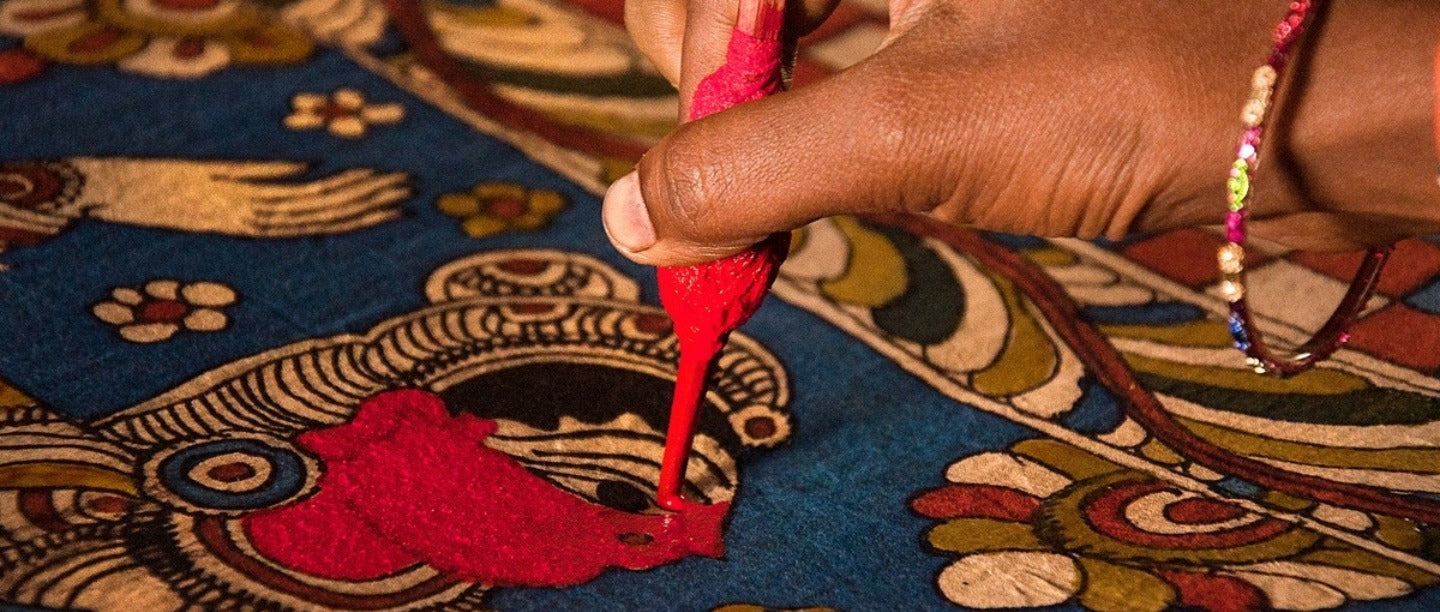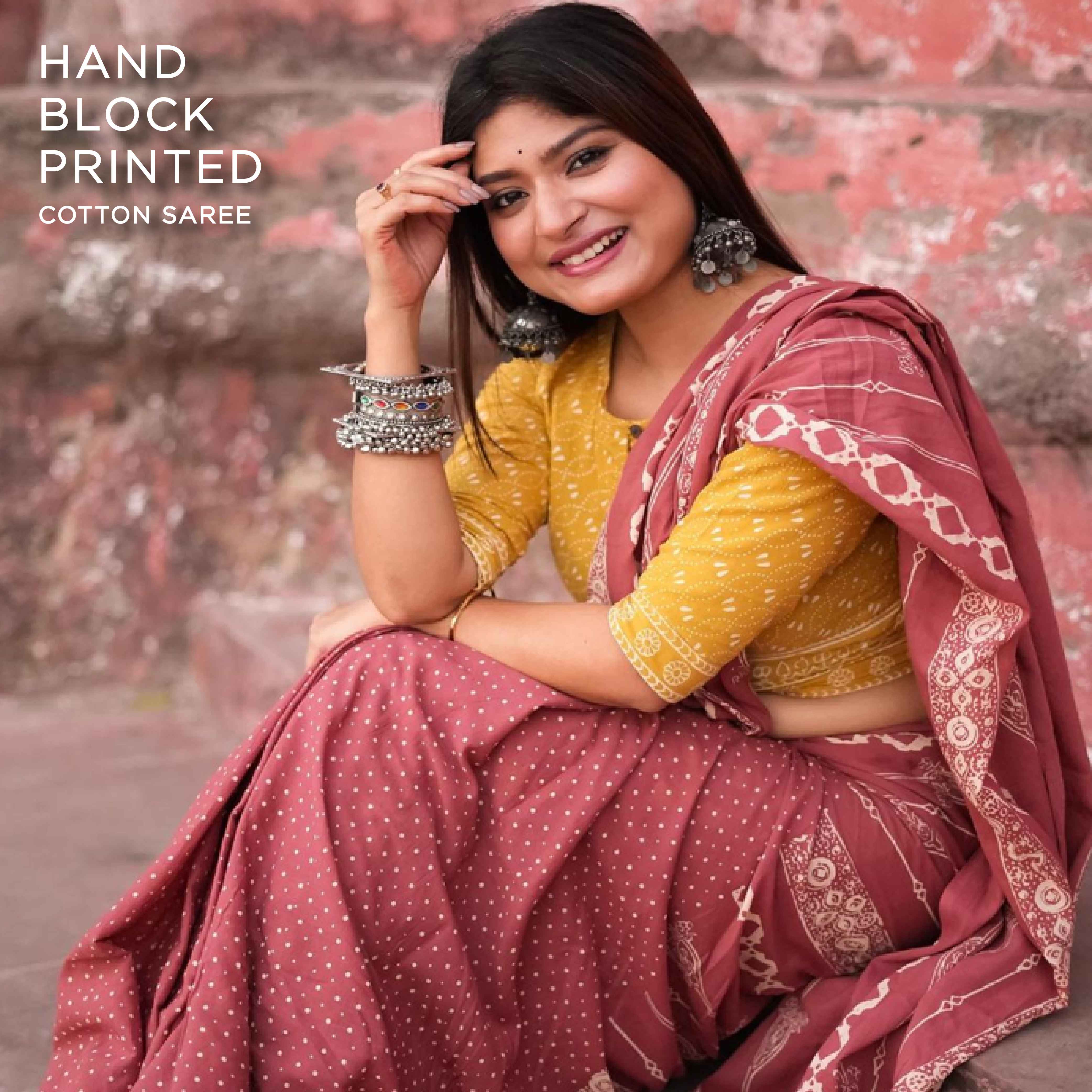India, a country embracing its own prestige culture and heritage.
Here the lanes of each city are filled with rich traditional histories. And when it comes to the textile world India is a proud host of a wide variety of craft and art residing in its heart. Amidst by different regions representing its own unique style art forms. Each art form has a distinct style and is widely popular all over the world.
In this special blog, we'll take you on a journey that beholds the varieties of handprints use in different parts of the country. Also, how these dainty motifs adore the fabric and have its own niche in the textile industry.

Ajrakh

Bagh
Bagh, a traditional hand block print using natural dye, an old-age Indian handicraft practiced in Bagh, Dhar district in Madhya Pradesh.
Derived its name from the village Bagh located on the banks of the Bagh River. Motifs representing geometric and floral compositions with most colors of red and black design over white background.

Batik
Derived from the word 'Ambatik' means a cloth with little dots in which 'tik' symbolizes dot, drop, point. It is a unique technique of coloring or adoring the fabric by hiding the part of the design with a wax coat and then dye it. So the wax area remains with the actual color of the fabric when the wax is removed. In India, these Batik printing is done in many places such as Rajasthan, Andra Pradesh, Maharashtra, West Bengal, Madhya Pradesh, and Gujarat.

Bandhani
Derived from the Sanskrit word 'Banda' which means to 'tie'. Also, know as Bhandhej, Bandhani is a type of tie and dye which is a design by dyeing the fabric that is tightly tied with a thread at various places to produce different patterns and motifs. Majorly practice in the states of Rajasthan and Gujarat.

Bagru
A traditional handprint technique using natural dyes followed by the Chippas of a remote place of Rajasthan. The tediously long process involves transferring dainty motifs onto the light-colored background fabric with the use of wooden blocks following two styles direct and resist style.

Dabu
A hand printing technique which almost died in the last century, but was revived by the artisans today and is widely popular globally. Born in the ancient lanes of Rajasthan, this hand block printing technique is a labor-intensive task. This particular form of imprint involves several steps in printing and dyeing, using a mud resisting process of hand block printing. Dabu print is also famous for displaying the subtle depth of design which makes it immensely popular among the new-designers.

Kalamkari
'Kalam' means pen and 'Kari' which refers to craftsmanship derived from a Persian word. The printing technique of Kalamkari, involves the ancient hand painting process which is done by tamarind pen using natural dyes. Motifs often represent flowers, peacock, paisleys, and also divine characters from Ramayana and Mahabharata. It is said to be a 3000-year-old art form practiced in Andhra Pradesh and Telangana

Sanganeri
A hand printing technique originating from Sanganer, a village in the southern part of Jaipur, Rajasthan. Sanganeri involves laying out of the material on tables and then printing using blocks with intricate designs. With floral motifs representing buds, flowers, leaves, mangoes, and even jhumkas sometimes are part of the detailed designs on the blocks.







